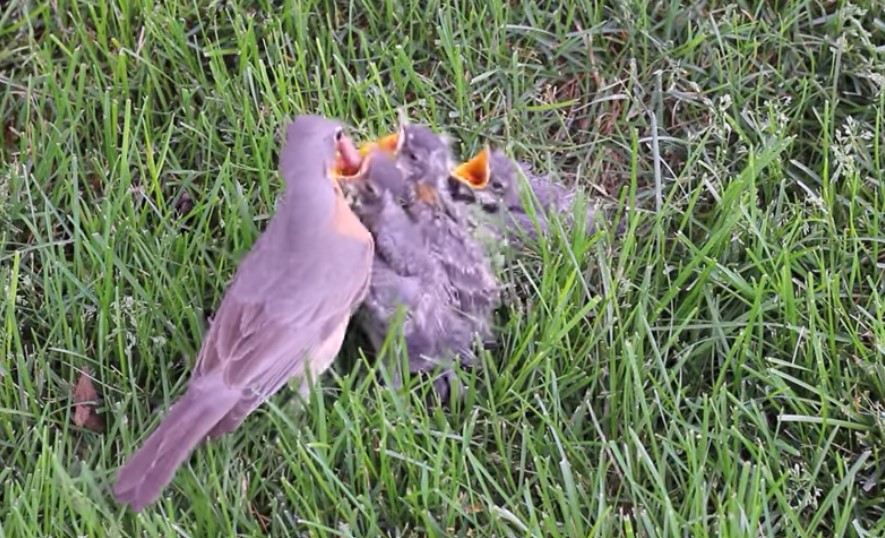
Life is pretty simple (although, not easy) when you have a bird problem in the attic or on the roof. You can take active steps to remedy those problems — closing off the attic and making sure all birds, young birds, and nests are removed from the space, or adding netting or spike strips to the roof to prevent the birds from landing there. Life gets a tad trickier when you have birds on your property, but without an immediately obvious nesting point. Seeing birds on the grass means that they are attracted to your property for one reason already, and that reason is food. They'll keep coming back to that spot, and telling their relatives and friends about it, all the while the food is still made readily available to them. If that food continues to come, the birds will move in close by to prevent having to travel so far when they get hungry.
If you see birds on your grass, there's a chance they are roosting on your property, or in a property that is close by. If you can see them flying in and out of your neighbor's attic space or hanging around on their roof, it is wise to head around there and let them know about it. You're going to have a bird problem if your neighbor has a bird problem.
If you are sure that the birds are not roosting in your building (such as the attic), you can bird-proof your yard. There are many traditional remedies that still have some effect, although we personally recommend using multiple efforts for best results. CDs that are hung from tree branches and similar structures offer a reflective surface that moves around and these can deter birds from landing or roosting close to them. You could even look at other holographic or foil-like materials and items — they beam bright lights at the birds and they don't appreciate it much, and if the items move, they work in the same way that a scarecrow does. The humble scarecrow can actually still be quite effective at stopping birds on the grass, and gives you something to do creative with the kids over the weekend.
You can also use dummies and decoys of predatory birds and animals to keep birds at bay, including owl and eagle decoys. You will need to move them around your garden quite a lot, as the birds are not stupid animals and will learn that they are just plastic decoys if they're left in the same place. Slightly more complex and technical designs of decoys are now available, too. Bird scared kites, for example, have kestrel or owl shapes to them, and because they are made in the same way that a kite is, it actually looks as though these birds of prey are flying around. Sadly, the more complex the deterrent, the more expensive it is likely to be. A plastic owl can be as cheap as a few dollars, but the kite-style designs can cost in excess of $70.
Of course, you could always go back to basics with your bird control efforts... If you have the time to do so, you could throw a ball in the general area of the birds (being careful not to actually hit them) to try and disperse them, and you may find that loud sounds or just your presence is enough to deter them for a while. Without removing the food sources, though, there's a chance they'll just come right back as soon as you have gone back into the building or the noises have stopped.
Go back to the pestcontrolbird.com home page.
Copyright 2021 - pestcontrolbird.com
Nationwide Bird Control